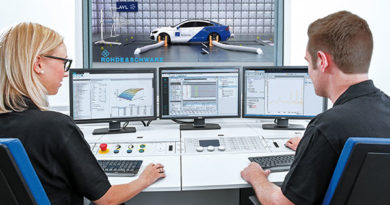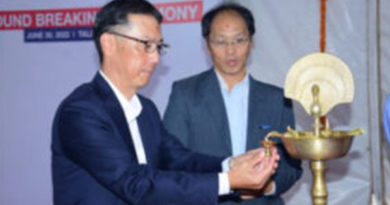What is Advanced Servitization: Output as a Service?
This article will discuss:
- Significance of Output as a Service and Servitization of Machines in the Manufacturing Industry
- Technological Support for Implementing Output-as-a-Service Strategies
- Roles and Responsibilities of Stakeholders in Output as a Service
- Advantages of Leveraging Servitized Machines
Fostering growth stands as a paramount duty for stakeholders overseeing a manufacturing enterprise. The adoption of lean manufacturing practices, exemplified by the codification of processes like Kanban into standardized procedures, successfully minimized waste and boosted productivity. Despite the initial successes, the global expansion in the industry plateaued in the decade leading up to the present. This stagnation is precisely what Industrie 4.0 and the implementation of machine servitization within facilities aim to address and rectify.
Introducing output as a service
The systematic enhancement of output or throughput for the typical user of manufacturing equipment can be quantified and formalized to create a consistent roadmap for maximizing production cycles. This is precisely the objective of output as a service. This innovative approach encompasses two primary strategies. Initially, it involves Original Equipment Manufacturers (OEMs) supplying manufacturers with equipment and optimization tools to consistently achieve peak throughput. Alternatively, in the second approach, equipment owners furnish end-users with an optimally functioning machine within a product-service system.
Expanding on the initial description of output as a service, OEMs play a pivotal role in aiding manufacturing facilities to optimize growth initiatives by offering additional services or support to enhance machine utilization. These supplementary services encompass insights derived from benchmark data, highlighting optimal equipment usage for continuous output maximization. Examples also include providing facility owners with predictive maintenance toolkits and real-time remote maintenance services, ensuring the elimination of downtime and proper equipment usage.
Effectively eradicating unplanned downtime and establishing real-time, in-house response capabilities directly contributes to enhancing both the quantity and quality of goods produced by a facility. In contrast to lean manufacturing, the implementation of an output-as-a-service initiative is distinctly focused on fostering growth and improving output quality rather than merely reducing costs.
The second facet of the output-as-a-service approach involves the servitization-of-the-machine strategy. In this scenario, the equipment owner or OEM develops a product-service system accessible to manufacturers through contractual agreements. This system ensures that servitized machines function optimally throughout the duration of use by the manufacturer or end-user. Additionally, the product-service system provides tools and materials empowering the manufacturer to optimize output during servitized hours.
Digital transformation and output as a service
Delivering output as a service requires knowledge of every aspect of a production cycle. The manufacturer offering servitized equipment or providing optimization solutions must understand how the end-user interacts with servitized machines. Having this knowledge helps when responding to complaints or planning to improve the product-service system.
Gaining insight into a servitized environment starts with tracking important production and machine utilization metrics. Digital-transformation solutions provide the tools for keeping tabs on product-service systems and servitized machines using digital technology. Technological solutions – from the deployment of IoT devices to manufacturing enterprise systems, from edge devices to the digital twin – provide the tools for implementing output as a service. Learn more from the elements of servitization white paper about the role of digital transformation.
Responsibilities associated with servitization of the machine
Servitization of the machine confers important responsibilities to the parties involved with implementing and taking advantage of servitized equipment. To servitize a machine, manufacturing enterprises must have the supporting structures and technologies to ensure optimal output is guaranteed. Thus, the responsibility of tracking machine utilization and handling repairs or maintenance belongs to the OEM providing the services.
The aforementioned responsibilities of the service provider are also outlined within the contractual agreements signed by both parties. Servitized machines are deployed to deliver output as a service, and mismanaging the servitized environment comes with harsh penalties that are outlined within the contract.
The responsibilities of the end-user of the servitized machine are also considered when optimizing output is the goal. The customer is expected to provide the operators and, in some cases, the raw materials to execute production cycles. In scenarios in which throughput quality or quantity is affected due to the inability of the end-user to meet their obligations, any negative outcomes from the poorly utilized servitized equipment are borne by the customer.
The benefits of servitization of the machine
Machine servitization focuses on optimizing output. This is its major benefit. The customer or end-user gets optimized equipment with all the technical support required to improve productivity and meet quantity and quality-control requirements. For small and medium manufacturers which do not have the resources to purchase or maintain heavy-duty equipment, servitized machines provide an affordable means to access expensive equipment.
For large-scale manufacturers, servitization of the machine outsources the repairs, maintenance, monitoring, and management of equipment to more capable hands. The manufacturer simply pays to use optimized equipment when it is required for specific production purposes. The contractual arrangement enables the manufacturer to focus on the job of improving output without any equipment-related challenges.
The benefits of servitization of the machine and offering output as a service-to-service providers create a regular and alternate source of income for OEMs, thus spurring revenue growth. OEMs also get to learn about how their equipment functions in the real world by collecting utilization data and the insight that comes with it. Thus, servitization benefits the service provider financially …while also improving output.
Conclusion
Output as a service and the servitization of machines present the manufacturing sector with a chance to enhance both its financial standing and production output. Notably, output as a service stands out as the exclusive business model of Industrie 4.0 that concentrates solely on fostering growth, diverging from the prevalent emphasis on cost reduction. Therefore, manufacturers aspiring to harness the benefits of the smart factory for output improvement need to build the capability to offer servitized solutions or capitalize on them, depending on the capabilities inherent in a particular facility.



